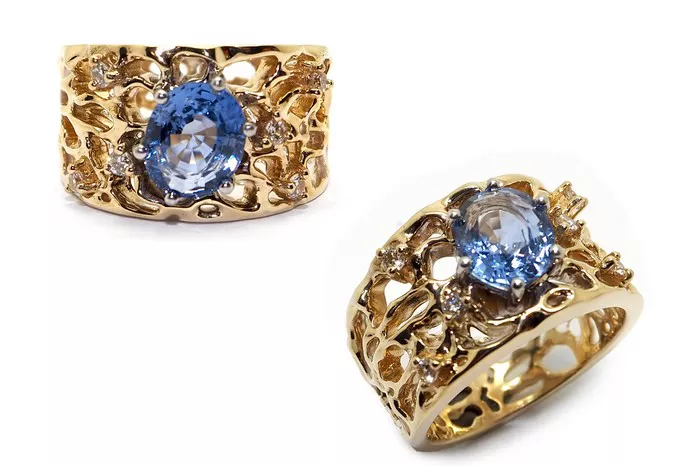Gemstones have fascinated humanity for centuries, captivating our imagination with their brilliant colors, unique properties, and intricate histories. Among the myriad of precious stones, yellow sapphires and canary diamonds stand out for their striking yellow hues and immense rarity. Understanding the intricacies of these gemstones and comparing their rarity involves exploring their geological origins, natural occurrences, and market availability. This article aims to provide a comprehensive introduction to yellow sapphires and canary diamonds, examine their respective rarity, and delve into the factors that influence their scarcity.
Introduction to Yellow Sapphires and Canary Diamonds
1. Yellow Sapphires: A Gemstone of Versatile Elegance
Yellow sapphires belong to the corundum family, which also includes the famous ruby. The yellow color in sapphires is primarily caused by trace elements such as iron and titanium, which create a range of hues from light yellow to deep golden tones. These gemstones are found in various locations worldwide, including Australia, Myanmar, Sri Lanka, and Madagascar.
Yellow sapphires are renowned for their versatility and durability. Their hardness, which ranks second only to diamonds on the Mohs scale, makes them ideal for jewelry that withstands daily wear and tear. The rich yellow hues can vary widely, from pastel shades to vivid, almost golden tones, offering a spectrum of choices for jewelry enthusiasts.
2. Canary Diamonds: A Rarity Among Gems
Canary diamonds, on the other hand, are a specific type of yellow diamond. Diamonds are composed purely of carbon atoms arranged in a cubic crystal structure. The yellow color in canary diamonds is caused by the presence of nitrogen atoms within the crystal lattice. These nitrogen atoms absorb blue light, causing the diamond to appear yellow.
Canary diamonds are named for their warm, yellow hues reminiscent of the color of a canary bird. Unlike yellow sapphires, which can exhibit a range of yellow tones, canary diamonds are typically characterized by their vivid and consistent yellow color. These diamonds are found in mines around the world, but the most famous source is the Cullinan mine in South Africa, which has produced numerous notable yellow diamonds, including the famous Cullinan Diamond.
Comparing the Rarity of Yellow Sapphires and Canary Diamonds
1. Natural Occurrence and Formation
Yellow Sapphire Formation:Yellow sapphires form under high pressures and temperatures within the Earth’s crust, typically in igneous and metamorphic rocks. Their formation process is relatively complex but not as rare as diamonds. Sapphire deposits can be found in various geological settings, which contributes to their broader availability compared to diamonds.
Canary Diamond Formation:Canary diamonds, like all diamonds, form under extreme conditions deep within the Earth’s mantle. They are brought to the surface through volcanic activity or kimberlite pipes, which are volcanic conduits that transport diamonds and other minerals to the Earth’s surface.
2. Market Availability and Demand
Yellow Sapphire Market:Yellow sapphires have gained popularity in recent years due to their versatility and relatively affordable pricing compared to diamonds. The market for sapphires is diverse, catering to both high-end jewelry and more affordable fashion pieces. The availability of heat-treated sapphires has further expanded the market, allowing for a wider range of color and clarity options.
Canary Diamond Market:Canary diamonds occupy a prestigious position within the jewelry market due to their rarity and striking yellow color. They are highly sought-after by collectors, celebrities, and those seeking unique, high-end jewelry pieces. The demand for canary diamonds is driven by their exclusivity and the fact that they are among the rarest naturally occurring gemstones.
3. Factors Influencing Rarity
Geological Factors:The rarity of both yellow sapphires and canary diamonds is influenced by geological factors. The specific conditions required for their formation are rare and often localized to specific regions. For instance, sapphire deposits are typically found in igneous and metamorphic rocks, while diamonds form under extreme pressures and temperatures deep within the Earth’s mantle.
Mining and Extraction:The mining and extraction processes for yellow sapphires and canary diamonds also play a role in their rarity. Mining operations can be complex, labor-intensive, and environmentally challenging. The cost of mining and processing raw gemstones can be significant, which can affect the final availability and pricing of finished products.
Market Demand and Fashion Trends:Market demand and fashion trends also influence the rarity of yellow sapphires and canary diamonds. As consumer preferences evolve, the demand for specific gemstones can fluctuate. For instance, the popularity of yellow sapphires has increased in recent years due to their versatility and relatively affordable pricing.
Conclusion
In conclusion, both yellow sapphires and canary diamonds are rare and precious gemstones that captivate our imagination with their striking yellow hues and intricate histories. While yellow sapphires are relatively more abundant than canary diamonds, naturally occurring, untreated stones with vivid hues remain highly valued and scarce. Canary diamonds, on the other hand, occupy a prestigious position within the jewelry market due to their exclusivity and rarity.
Related topic:
- Yellow Sapphire: A Glimpse into Its Elegance and Suitability for the Ring Finger
- How to Activate Yellow Sapphire Stone?
- Can Yellow Sapphire Be Worn in Silver?


